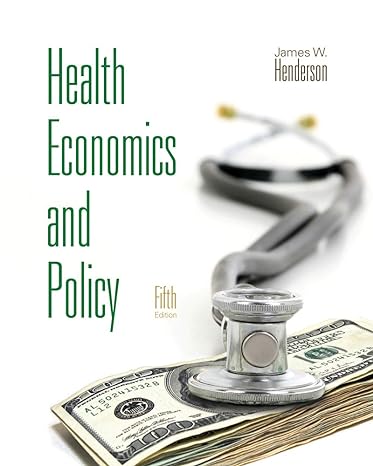The health authorities are considering the treatment alternatives for three types of diseases: heart disease, cancer, and
Question:
The health authorities are considering the treatment alternatives for three types of diseases:
heart disease, cancer, and infectious disease. Each year there are 10,000 new cases of heart disease, 10,000 new cases of cancer, and 5,000 new cases of infectious disease. For each diagnosis, there are a number of mutually independent treatment alternatives (including no treatment) as shown in the table on the next page.
a. Identify all dominant treatment alternatives.
Explain why each is dominant.
b. Calculate the incremental cost, incremental QALYs, and incremental cost-effectiveness ratios (ICERs) for all economically rational strategies (ICER = incremental cost/incremental QALYs). Why are these considered economically rational?
c. Using separate graphs for heart disease, cancer, and infectious disease, show the alternative treatment options, label the dominant options, and show the economically feasible alternatives. (Place QALYs on the vertical axis and cost per treatment on the horizontal axis.)
d. The local health district has asked your opinion on the “best” strategy from a public health perspective (disease covered, treatment strategy).
What do you tell them? How much will it cost?
Step by Step Answer:







